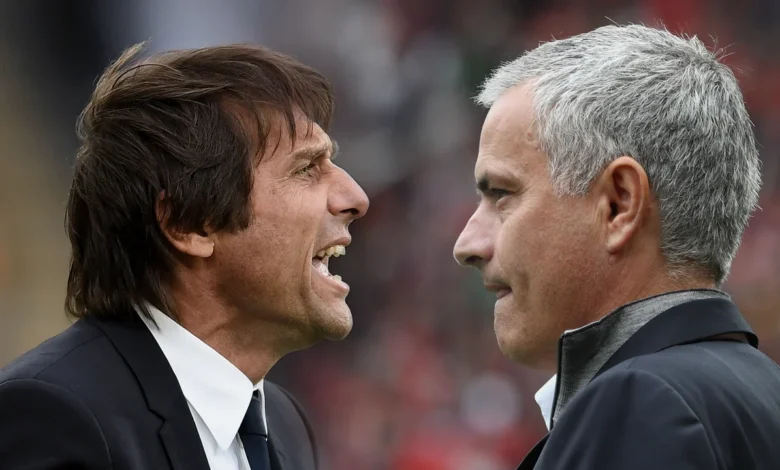
Chelsea Football Club has built a reputation for tactical flexibility, adapting to different managers and styles while achieving immense success. From the rigid defensive blocks of the early 2000s to the fluid attacking play of more recent years, certain formations have defined Chelsea’s greatest triumphs.
This article looks at some of the most successful tactical setups that have shaped the club’s history.
1. 4-3-3 (Mourinho’s First Era – 2004-2007)
The 4-3-3 formation became synonymous with Jose Mourinho’s first spell at Chelsea, leading to back-to-back Premier League titles (2004-05, 2005-06). The system was built on a rock-solid defense featuring John Terry, Ricardo Carvalho, and Petr Čech in goal, while Claude Makélélé provided the perfect shield in midfield.
Frank Lampard thrived in this system, contributing heavily with goals from midfield, while Didier Drogba led the attack with powerful hold-up play. The wide players, often Arjen Robben and Damien Duff, stretched defenses, providing the width that made Chelsea a dominant force. The result? Chelsea shattered records, including the most points in a season (95) and the fewest goals conceded (15) in 2004-05.
2. 3-4-3 (Conte’s Title-Winning Masterstroke – 2016-2017)
Antonio Conte revolutionized Chelsea’s 2016-17 campaign by switching to a 3-4-3 formation after a tough start to the season. The shift brought immediate success, as Chelsea went on a 13-game winning streak and secured the Premier League title.
The formation relied on a three-man defense (César Azpilicueta, David Luiz, and Gary Cahill), flanked by the energetic wingbacks Marcos Alonso and Victor Moses. N’Golo Kanté and Nemanja Matić provided steel in midfield, while Eden Hazard, Pedro, and Diego Costa led a devastating attack. This system allowed Chelsea to dominate both defensively and offensively, making it one of the most effective tactical setups in the club’s history.
3. 4-2-3-1 (Ancelotti’s Free-Scoring Chelsea – 2009-2011)
Carlo Ancelotti’s Chelsea side was one of the most entertaining teams in the club’s history, with the 4-2-3-1 formation playing a key role in their attacking dominance. During the 2009-10 season, Chelsea became the first team in Premier League history to score over 100 goals in a single campaign, securing a historic domestic double (Premier League and FA Cup).
With Didier Drogba as the lone striker, Chelsea’s attack was relentless. Florent Malouda and Nicolas Anelka provided width, while Frank Lampard, Deco, and Michael Ballack operated behind the striker. The midfield double pivot of John Obi Mikel and Michael Essien ensured balance, while Ashley Cole and Branislav Ivanović offered defensive stability and attacking support.
4. 3-5-2 (Tuchel’s Champions League-Winning Tactics – 2020-2021)
Thomas Tuchel’s arrival in 2021 saw Chelsea transform into a defensively solid unit, with the 3-5-2 (or 3-4-2-1) formation proving instrumental in their UEFA Champions League triumph. The three-man defense, consisting of Thiago Silva, Antonio Rüdiger, and Azpilicueta, provided a near-impenetrable barrier.
Wingbacks Reece James and Ben Chilwell offered width and defensive coverage, while N’Golo Kanté’s midfield dynamism was crucial. Mason Mount and Kai Havertz operated in advanced midfield roles, supporting a lone striker, often Timo Werner or Havertz himself. This setup allowed Chelsea to control games, as seen in their 1-0 Champions League final victory over Manchester City.
5. 4-4-2 Diamond (Ranieri’s Foundation – Early 2000s)
Before Chelsea’s dominance under Mourinho, Claudio Ranieri set the foundation with a 4-4-2 diamond formation that helped Chelsea secure a top-four finish and reach the Champions League semi-finals in 2003-04.
The system relied on a midfield diamond, with Makélélé at the base, Lampard and Tiago Mendes in central roles, and Eidur Gudjohnsen or Joe Cole operating behind the strikers. This setup provided defensive stability and attacking fluidity, allowing Chelsea to transition into an era of success when Roman Abramovich took over.
Conclusion
Chelsea’s tactical evolution has played a crucial role in the club’s success over the years. Whether it was Mourinho’s disciplined 4-3-3, Conte’s revolutionary 3-4-3, or Tuchel’s compact 3-5-2, each formation has left a lasting impact on the club’s history. With new managers constantly bringing fresh ideas, Chelsea’s tactical adaptability will continue to shape its future triumphs.
FAQs About Chelsea’s Best Formations
1. What is Chelsea’s best formation of all time?
The 4-3-3 formation under Jose Mourinho (2004-2007) is often considered Chelsea’s best formation. It helped the club win back-to-back Premier League titles while setting defensive records.
2. What are Chelsea’s best five formations in history?
Chelsea’s most successful formations are:
- 4-3-3 – Used by Jose Mourinho during his first stint (2004-2007)
- 3-4-3 – Antonio Conte’s title-winning setup (2016-2017)
- 4-2-3-1 – Carlo Ancelotti’s attacking style (2009-2011)
- 3-5-2 / 3-4-2-1 – Thomas Tuchel’s Champions League-winning tactics (2021)
- 4-4-2 Diamond – Claudio Ranieri’s pre-Mourinho system (2003-2004)
3. What formation did Chelsea use to win the Champions League in 2012?
Chelsea used a defensive 4-2-3-1 setup under Roberto Di Matteo during the 2011-12 season, which helped them win their first UEFA Champions League title. The system relied on a strong defensive block, with Didier Drogba as the lone striker.
4. How did Antonio Conte’s 3-4-3 change Chelsea’s season in 2016-17?
Conte switched to a 3-4-3 after a 3-0 loss to Arsenal early in the season. This tactical change led to a record-breaking 13-game winning streak, eventually securing Chelsea the Premier League title.
5. Why was Mourinho’s 4-3-3 so effective?
Mourinho’s 4-3-3 was built on defensive solidity and a balanced midfield. With Makélélé shielding the defense, Lampard given freedom to attack, and Drogba leading the line, Chelsea became nearly unstoppable.
6. What formation did Chelsea use in their 2021 Champions League triumph?
Chelsea used a 3-4-2-1 formation under Thomas Tuchel, which provided defensive strength and attacking versatility. This system played a key role in their 1-0 victory over Manchester City in the final.





